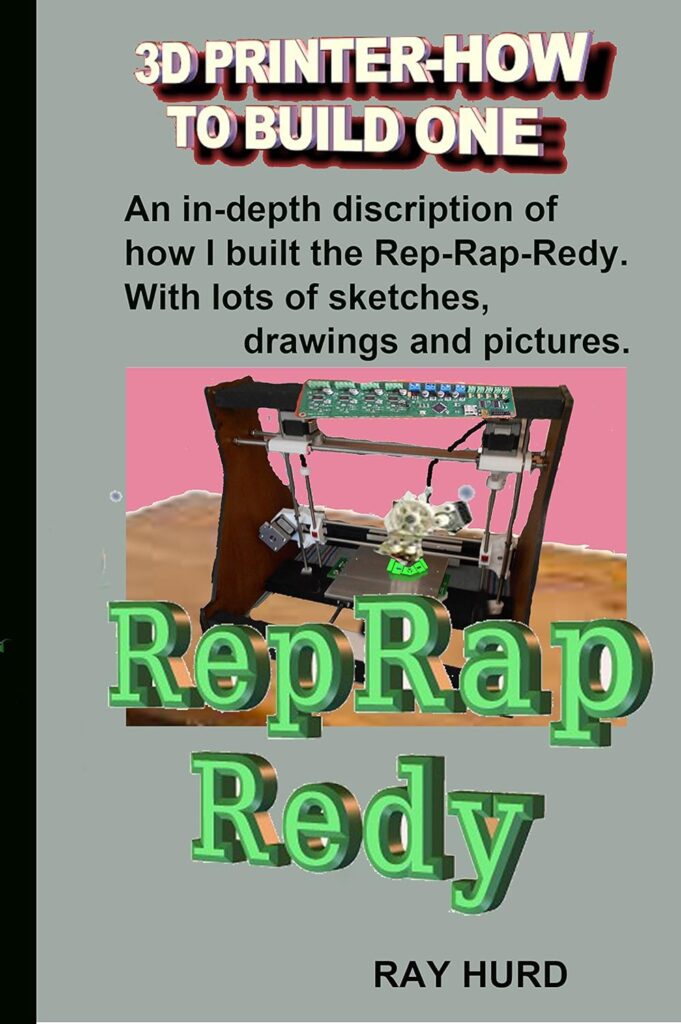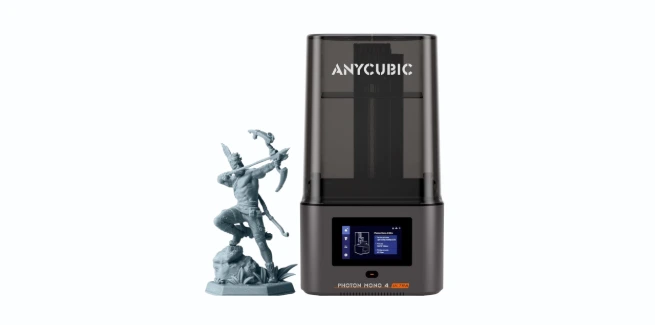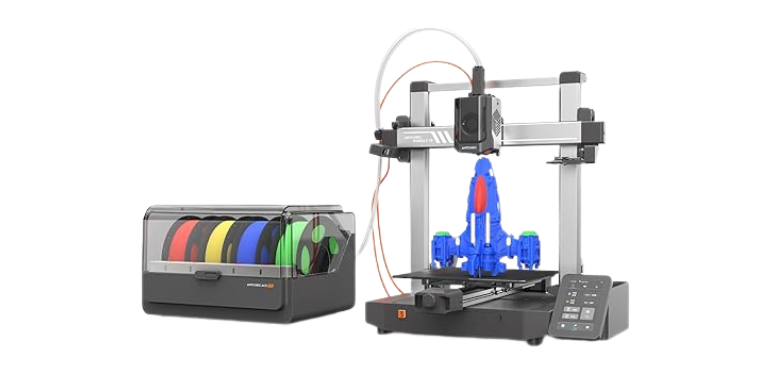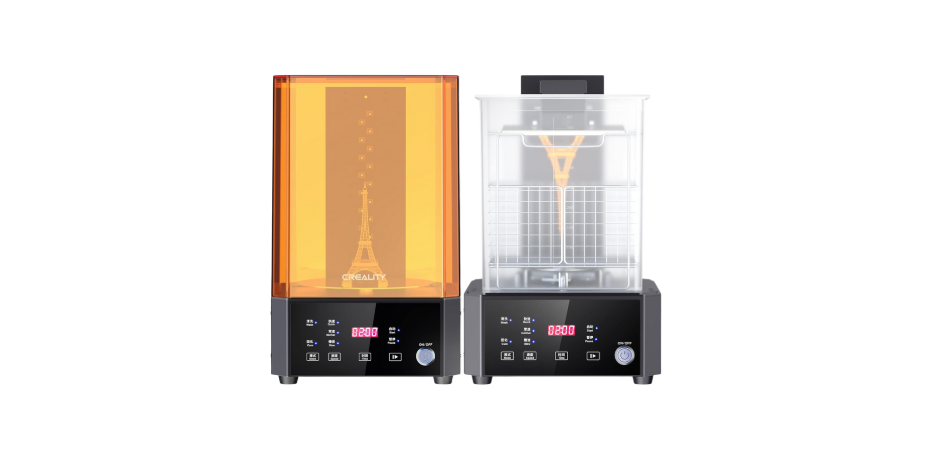Do you remember the first time you tried to fix something, only to make it worse in a way that required apologizing to an inanimate object?
Why I Picked Up “3D Printer – How to Build One” (Kindle Edition)
I bought this Kindle book because I wanted to stop watching videos at 1.25x speed and actually build something that could sit in a dusty corner of my apartment, humming and smelling faintly of warmed plastic. I didn’t want to become one of those people who only talks about projects while surrounded by unopened boxes. I wanted a book to hold my hand—not in a romantic way, more like a patient aunt who has an organized purse and plans.
What This Kindle Book Promises, and What I Actually Got
The title promises a practical guide to building a 3D printer—one you can assemble yourself and presumably be proud of. What I got was a clear, linear walkthrough that felt designed for someone precisely like me: eager, mildly anxious, and capable of feeding a cable through the wrong hole in seven different ways before finding the right one.
It’s a build-first, theory-second approach. The book won’t lecture you on polymer science or machine geometry before you’ve bolted the frame together, which I appreciated. It treats knowledge like seasoning rather than soup stock—added in small, thoughtful pinches.
First Impressions of the Kindle Edition
I read it on a Kindle Paperwhite and on my phone, because life is a series of moments in which you’re waiting for something—coffee, a download, the existential courage to wire a power supply. As a digital reading experience, it’s smooth. The formatting is stable, the headings are clear, and the steps break naturally across pages without splitting a sentence like an unkind haircut.
I used the Kindle highlights feature as a running checklist and felt strangely accomplished watching my neon yellow trail march through the chapters like a highlighter with ambitious plans.
Layout and Navigation
The layout is friendly and clean, the way I wish my kitchen felt before company. Step-by-step sections are easy to find, and the page breaks don’t interrupt crucial sequences. I never found myself swiping back and forth trying to find where the diagram was referenced, which is my personal metric for whether an instructional ebook respects my time.
There are quick reference points at each stage of the build, so if you need to revisit frame alignment, you won’t be spelunking through your bookmarks like an amateur archaeologist.
Diagrams, Photos, and Visual Clarity
The images load crisply and feel purposeful—this is not one of those books where the photos are more glamour than utility. Every photo has a job and does it. Even on the grayscale screen of the Paperwhite, cable paths and part positions are recognizable. Zooming was easy and didn’t mash the text into abstract art.
I would have appreciated a few more close-ups of certain wiring connections, but the combination of annotated photos and described orientation points generally carried me through without panic texting a friend who once soldered something.
The Writing Voice: Friendly, Direct, Slightly Wry
If a teacher could be relaxed without being careless, that’s the tone here. The instructions are specific but not fussy, and there are small asides that feel like a wink—short notes that reassure you a misaligned bracket isn’t the end of your budding maker identity.
I felt spoken to, not at. There’s a warmth to the way the book admits common mistakes. When a guide acknowledges that you’ll probably install a stepper motor backward at least once, it lowers your shoulders in a way no glossy promo video ever could.
The Core Build: What I Followed and Fixed
I used the book to build a functional FDM-style 3D printer—very much in the RepRap lineage—using off-the-shelf parts. The process was linear and humane. There’s no chapter that tells you to “do a dry run” without explaining what that means, or how to know whether a dry run has gone wet in an unfixable way.
Mistakes were anticipated. Calibration wasn’t an afterthought. And the electronics section did not assume I had ever done anything braver than replace batteries in a remote.
The Bill of Materials: Clear, Practical, Sensible
The book lays out a bill of materials in a way that doesn’t pretend you live inside a warehouse. It lists generic part types and acceptable alternatives rather than pinning your fate to a single sourcing link that’s inevitably out of stock the day you decide to be brave.
I liked that it gives you options across price tiers and suggests where you can save without regret. Steel frame over aluminum? Okay, but here’s what you’ll battle. Cheaper bearings? Your ears might notice, your wallet won’t.
Tools You’ll Actually Use
I built my printer with:
- Hex keys (metric)
- A small socket set
- Wire cutters and strippers
- A square for checking frame alignment
- A screwdriver set that jingled like I was on a mission
- Zip ties, because life is secretly held together by small plastic intentions
The book nudges you gently toward sensible purchases without upselling. There’s a clear distinction between “nice to have” and “please don’t attempt this without,” which I find refreshing.
Safety Notes That Don’t Kill the Mood
Safety sections are short, direct, and include the things that matter: unplug before rewiring, use a printed strain relief if your power supply doesn’t include one, don’t block ventilation, and check voltage selection twice. There’s frank talk about sharp edges and hot surfaces with the careful pragmatism of someone who’s seen a finger meet a fan blade.
The Frame: Squaring Without Losing Your Mind
The frame assembly instructions were where I stopped feeling like a guest in my own life. The book shows multiple ways to verify squareness and recommends tightening patterns so you don’t create a frame that looks perfect from one angle and haunted from another. It acknowledges that a “square” that isn’t actually square carries consequences that no amount of software can fully forgive.
Motion System: Belts, Pulleys, and the Religion of Tension
If you’ve ever threaded a belt and thought, “Is this how adults behave?”, you’ll appreciate the book’s slow, confident pacing here. It explains how to route belts so they don’t rub on idlers like a cat looking for attention. It offers a few simple tests to check tension without buying a specialized gauge, which, if you’re me, you’d lose anyway.
Electronics: Anxiety Managed
There’s something that happens when you read the words “connect the mains” and immediately picture an obituary. The book handles wiring with a cool competence that calmed me down. Polarity, insulation, strain relief—covered. I particularly liked the advice for dressing cables so they don’t end up looking like a nest built by a bird with high standards and low follow-through.
The firmware configuration section is what a lot of ebooks get wrong. Here, the settings are explained with the patience of someone who remembers their first time. Steps per millimeter, maximum travel, thermistor tables: explained, not recited. I actually understood what I was telling the printer to do, which is unusual for me and most machines.
Calibration: The Thirsty Part of the Process
This is where most guides either get vague or turn into a novella. This one strikes a balance. It shows you how to level the bed without turning it into a meditative practice that steals your weekend. Retraction and extrusion tuning are handled methodically. And when it comes to first layers, you’re given signs to look for—elephant’s foot, under-extrusion, the dreaded spaghetti—that make troubleshooting less like guessing and more like reading.
My Build, In the Emotionally Honest Sense
I read the book twice before I touched a single screw, not because I’m careful but because I’m easily startled. When I finally started, I was prepared, and that made all the difference. I spread everything out on the dining table, which briefly became my manufacturing facility and a source of negotiation with the other members of my household.
It took me two long evenings to assemble and wire, and another day to calibrate and print a first test. The first print was a calibration cube, the maker’s version of “Do-Re-Mi.” It came out like a cube in the way a muffin is a cake—technically yes, but don’t look too closely. By the fourth print, I had something that measured correctly and didn’t look like it had been left in the sun. The book’s approach to iteration made that possible.
Quick Breakdown: What You Get from “3D Printer – How to Build One” (Kindle Edition)
To make things concrete, here’s how I would summarize the experience.
| Area | What the Book Provides | How It Felt in Practice | My Outcome |
|---|---|---|---|
| Planning | Clear overview of parts, tools, and space needs | Simple checklists, flexible sourcing | No last-minute part panic |
| Frame Assembly | Step-by-step with alignment checks | Measurable and repeatable | Square frame on first attempt |
| Motion System | Belt routing, tension tests, pulley alignment | Calm pacing, useful tips | Smooth motion without gnashing |
| Electronics | Wiring diagrams, safety notes, cable management | Confidence-building and tidy | Powered up without drama |
| Firmware | Human-readable config explanations | Not rushed, explains decisions | Homed axes successfully |
| Calibration | Leveling, extrusion, retraction, temperature tuning | Structured and forgiving | Solid first layer, reliable prints |
| Troubleshooting | Symptom-based hints | Encouraging, not patronizing | Fixed early issues quickly |
| Kindle Experience | Searchable, highlight-friendly, stable layout | Easy cross-referencing | Faster learning loop |
The First Successful Print, and the Second, and the Humbling Third
The first thing I printed after the calibration cube was a small hook. It worked, which is a problem, because now I believe I can manufacture solutions to life in 8-hour increments. The third print failed because I got cocky, assumed the room temperature didn’t matter, and skipped a re-level. The book gently warned me this would happen, and it did, like a prophecy you can neither avoid nor resent.
Who This Book Is For, Honestly
This Kindle edition is a great choice if:
- You want a practical, buildable first printer and you prefer text you can annotate.
- You’d like to understand the “why” behind settings without sitting through a lecture on machine control theory.
- You care about making it work before making it pretty, though there’s a fair shot at both.
It’s less ideal if:
- You want to buy a pre-assembled machine and go straight to printing action figures of your pets.
- You need handholding for soldering tiny connectors or advanced electronics mods. The book is beginner-friendly but stays focused on the core build.
Strengths and Weaknesses in Plain Language
I love lists almost as much as I love pretending I don’t love lists, so here we go.
Strengths:
- Clear sequencing that respects your learning curve
- Kindle-native formatting that actually helps you build
- Practical calibration steps that lead to real wins
- Encouraging tone with real-world troubleshooting
- Flexible BOM approach so you’re not sourcing unicorns
Weaknesses:
- A few spots could use extreme close-up photos, particularly for endstop wiring
- Less emphasis on advanced upgrades (dual Z, linear rails) out of the gate
- Assumes a modest tolerance for trial-and-error during first-layer tuning
The Cost, Time, and Difficulty, as I Lived It
If you’re like me, you want to know how much this is going to cost, how many nights you’ll skip TV for bolts, and whether you’ll cry. Here’s my personal map.
| Category | My Estimate | Notes from the Build |
|---|---|---|
| Parts Cost | Moderate; varies by frame and electronics choice | The book supports budget-friendly options without pushing junk |
| Tools Cost | Low to moderate | You can do it with basic tools and patience |
| Time to Assemble | 8–12 hours across 2–3 sessions | I took breaks to avoid unforced errors |
| Time to Calibrate | 3–6 hours | Pacing yourself goes further than heroics |
| Difficulty | Beginner to intermediate | Patience > prior experience |
I didn’t track the hour I spent sweeping up zip tie ends, which I shed like a molting animal.
Why a Kindle Edition Is Actually Helpful for a Build Like This
A physical book has charm, but a Kindle lets you search for “E-steps” at midnight when your cube is a trapezoid. I created a highlight set for “do before powering on” and another for “after first heat.” The device remembered far more than I would have, and my greasy fingers didn’t ruin anything priceless.
The portability mattered. I read wiring sections on my phone’s Kindle app while sitting on the floor with the frame in my lap like an earnest accordion.
Search, Highlights, and Updates
The search function saved me dozens of minutes. I highlighted everything that felt like a future regret waiting to happen. If the book updates, a Kindle version can keep pace. It’s like version control for my courage.
The Tone That Kept Me Moving
Some technical books talk down to you in a way that makes you want to lie about what you don’t know. This one speaks plainly, which made me more honest with myself and less likely to pretend that “pretty tight” is a measurable unit of belt tension.
I laughed a couple of times—quietly, so the printer wouldn’t think I was mocking it. The humor is subtle and never at your expense. If you’ve ever felt talked to like a person and not a pair of shaky hands, you’ll get it.
What I Printed After I Felt Brave Enough
- Cable clips for the printer itself, which felt like teaching a child to tie their shoes
- A spool holder, which didn’t squeak and therefore raised my self-esteem
- A calibration pattern shaped like a square but morally more complicated
- A small planter that now holds a plant I’m neglecting less out of guilt
The book doesn’t include a catalog of models, but by the time you finish calibrating, you’ll have the skills to print functional parts without bargaining with the universe.
Calibration: The Part Where I Grew Up a Little
This section deserves its own standing ovation. The book’s approach helped me understand how changes ripple through a print. When I tightened belts, it improved dimensional accuracy but showed me that my jerk settings were a touch aggressive, which the book predicted. When I slowed first-layer speed, adhesion went from a fragile handshake to a firm embrace.
These cause-and-effect explanations felt like small miracles. I wasn’t just memorizing values—I was learning a personality. The printer’s, unfortunately, not mine.
Troubleshooting Without Tears
When something went wrong, I didn’t feel abandoned. There’s a diagnostic style that starts with symptoms and works backward. Under-extrusion? The book lists a handful of likely causes and simple checks, and it prioritizes the easy ones first. It reminds you that most issues are a stack of small things rather than one dramatic failure, which somehow makes them easier to fix.
I also appreciated the advice to change one thing at a time. It’s a boring rule. It’s also the reason you don’t end up with a printer that technically works but only when the window is open.
What I Wished I Knew Before Starting
- Lay out your parts like you’re teaching a seminar; your future self will applaud.
- Put your tools in a tray and pretend you’re on a cooking show where the ingredients are screws.
- Charge your Kindle and your phone because you will not want to leave mid-wire.
- Keep a notebook. The book gives you what to do; the notebook remembers what you did.
This is the sort of prep that saves your Saturday from becoming a scavenger hunt staged by a chaotic neutral deity.
Where the Book Could Go Further
If I’m being greedy—and I usually am with good guides—I’d love:
- A short appendix on common upgrades and when they’re worth it
- A few macro photos of tricky connectors, zoomed in to the point where pores are visible
- A printable checklist at the end of each phase, for the satisfaction of crossing out boxes with a pen that clicks
None of this is a deal-breaker. It’s more a wish list I’d hand to a friend who already gave me a thoughtful gift.
Comparison: Book vs. Video vs. Forum Threads
I’ve built things using YouTube videos, and they can be magical, but they ask you to pause and scrub, and the good parts are always wedged between two very long sentences. Forum threads can be encyclopedic but wandering, like taking directions from a charming stranger who refuses to name streets.
This Kindle book gave me an organized path. I supplemented it with a video here and there for visualization, but when it came to knowing exactly what to do next, the book won. My sanity thanks it. My browser, with 47 tabs, is reconsidering its choices.
Learning Style: Reading, Doing, and the Space Between
I learn best from sentences that show up without judgement. The book set me up to do small, correct things in a row. It didn’t try to impress me with complexity. It didn’t hide difficult steps behind grand declarations. When I got stuck—usually somewhere between confidence and a bracket—I re-read the relevant section and found what I’d missed.
There’s a difference between being told “be careful” and being told “if this part flexes like this, you’ve overtightened.” This book leans toward the latter, and it shows.
Build Confidence: Incremental, Earned, Quiet
Confidence doesn’t come in an Amazon box. It comes from aligning rails so they glide instead of stutter, and from hearing a motor hum for the first time without smelling anything sinister. The book engineers these moments. It hands them to you, one small success at a time, and then lets you claim them like you weren’t talking to your printer five minutes ago.
By the time I printed a temperature tower, I could tell where things were off without reading a single chart. That felt like knowing a song well enough to harmonize.
Practical Tips I’m Glad the Book Included
- Tighten fasteners in a pattern, then revisit them. Metal has opinions and needs time.
- If a belt is singing, it might be too tight. Belts aren’t sopranos.
- Label cables as you go. Your memory will betray you at the most inconvenient moment.
- Do a cold and hot endstop check. Things change as parts expand.
- Print at moderate speeds until your ego calms down. You’re making things, not running a race.
These weren’t presented as commandments; more like friendly nudges from someone who wants you to succeed and also not electrocute yourself.
The Emotional Arc of a Build, which No One Talks About
I started this build because I wanted a tool. Halfway through, it felt like a negotiation with myself, where I’m trying to be the kind of person who finishes things. By the end, I had a machine and something better: a quiet sense that I could do this again, maybe even harder things, and that I didn’t need to reinvent the entire method to get there.
The book was the voice in the room that said, “It’s okay. Turn the screw a quarter more. Now breathe.”
Longevity: Will This Book Still Matter After You Build?
Yes. I’ve already gone back to the calibration and maintenance sections. A printer is not a one-time event. It’s a relationship with belts and bearings and ambient humidity. The reference value alone keeps this book on my device. If I ever tear the machine down for an upgrade, I’ll read the frame section again like a ritual.
The Build’s Aftermath: Living with a 3D Printer You Built Yourself
There’s a difference between owning a machine and understanding how to fix it. When something squeaks, I know where to look. When a print lifts at the corner, I have a plan instead of a superstition. That’s the effect of a decent guide. It trades mystery for solvable puzzles.
Also, yes, I show people the printer as if it’s a pet I adopted. It lives here now. It has a name. We make things.
A Note on Accessibility and Clarity
I appreciated that the book avoids jargon unless it’s about to define it. The sentence structures are clean, the typography kind to tired eyes. On the Kindle, font sizes and line spacing can shift to match your brain, which helps during late-night sessions when your attention span is rummaging around in the couch cushions.
If English isn’t your first language, the straightforward instructions will likely still be readable. There’s little fluff and almost no metaphors that require cultural decoding, which is not something I can say about, say, this paragraph.
A Small Wish List for a Future Edition
- A printable starter profile for common slicers, plus variations for common nozzle sizes
- A condensed one-page wiring map for quick sanity checks
- A troubleshooting flowchart, because my brain loves arrows
I’m asking for seconds because the meal was good.
Verdict: Would I Recommend “3D Printer – How to Build One” (Kindle Edition)?
Yes. If you’re intent on building a 3D printer and you’d like a guide that’s clear, warm, and actually makes you better at the craft, this Kindle book is worth your time. It doesn’t make a spectacle of itself. It gives you the steps, the reasoning, and enough encouragement to keep going when a belt slips or an axis refuses to home with dignity.
I finished the build feeling both proud and a little surprised, the way you feel when you learn a card trick and no one can immediately see the string. The printer worked because the steps were sound, and the steps were sound because the author respected the reader. I can’t ask for more than that from a how-to guide, unless we start including snacks.
Final Thoughts I Wrote After the Printer Ran Its First Eight-Hour Job
I’ve left the machine to print longer jobs now, and I check on it in that nervous, overly attentive way you check on bread the first time you attempt it. The book gave me the base habits—pre-flight checks, temperature sanity, bed clean, nozzle clean—that make those longer prints feel less like a gamble and more like a calculated wait.
There’s a gratifying humility to building a tool you then use. It’s less about owning a gadget and more about participating in the small manufacturing miracle at the corner of your desk. “3D Printer – How to Build One” helped me cross the line between staring at a problem and solving it with a stack of thin plastic lines that, together, become something I can hold.
I didn’t become a different person by building a printer. I did become a person with a printer who knows how to put it back together if I take it apart—intentionally or otherwise. And that, for me, is the very specific joy this Kindle edition delivered.
Disclosure: As an Amazon Associate, I earn from qualifying purchases.





